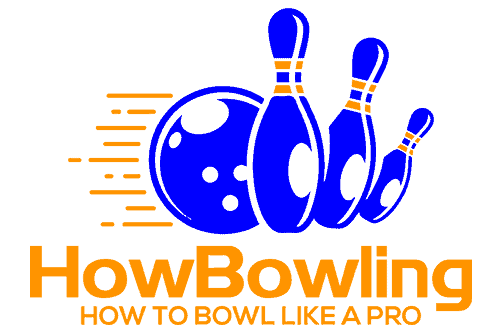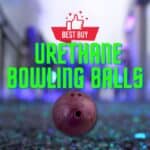Whether you are a beginner or a professional player of ten-pin bowling, knowing the basics of different bowling ball materials can surely help make your game better and get impressive strikes and spares whenever you need them. Today, the topic at hand is plastic bowling balls.
If you are entirely new to this sport, you might be thinking, what are plastic bowling balls, and how do they work? Well, that is precisely what I am here to tell you.
In this article, I will talk about plastic bowling balls, when to use them, how to use them, and even identify them. I am also going to compare plastic balls with urethane to see what is different in them. So, make sure you read this article till the end to increase your knowledge of bowling balls.

What is a Plastic Bowling Ball?
A plastic bowling ball is a bowling ball with an outer layer or covering made of plastic material. The outer layer, the smooth exterior of the bowling ball, is known as the coverstock.
The coverstock is made of a few different kinds of materials to provide the bowling ball with a rolling motion. One kind of coverstock material is plastic, and that is what plastic bowling balls are made of.
These bowling balls are the chosen variety for many beginners because they perform and behave on the lane. Still, at the same time, they are very commonly used by PBA professional bowlers in tournaments because of their behavior. As a result, they are trendy, and if you are getting into the sport, you should definitely choose them over other bowling balls.
What Plastic are Bowling Balls Made of?
Commonly referred to as plastic, these bowling balls are not just made of any plastic. Instead, they are specifically made of polyester. This plastic is what gives these balls their signature rigidity.
These bowling balls made of polyester are incredibly rigid but very smooth and frictionless at the same time due to their surface texture. As a result, they are quite a light feeling compared to some of the other bowling balls.
Polyester is the right material for plastic bowling balls because of the slight backend ball motion it provides and the straight face it keeps on the bowling lane. It is cheaper in comparison to other bowling balls as well.
When to Use a Plastic Bowling Ball?
Now that you know what plastic bowling balls are, you must be wondering, when should I use a plastic bowling ball? Well, that depends on a lot of things. So let’s look at all the possible factors that you need to think about before using a plastic bowling ball on the lane.
If you are a complete beginner
The thing about plastic bowling balls is that they offer very little friction, which means that you’re going to get a linear throw with a slight ball motion at the backend. So, if you are not a professional who knows their hooks and curves, as a beginner, using a plastic bowling ball would be the right way to go.
You need a spare
Typically, strikes are scored by getting the ball into one of the pockets within the pins, and that is achieved only with the help of a proper spin or hook. But in the case of a spare, you have got a couple or more pins that are standing close to each other, so you need a simple throw that does not bend and knock the pins you want. In such a case, use a plastic bowling ball.
There is not much oil on the lane
Lane conditions matter a lot when it comes to the use of plastic bowling balls. If the lane’s surface does not have a lot of oil on it, the plastic bowling ball will behave well and would not need to be replaced by a resin ball to move freely so that you can use a plastic ball in this case.
You need a perfectly straight throw
If you need an incredibly straight throw that does not deviate one bit throughout the roll, I suggest using the plastic bowling ball instead of using other balls like urethane, resin, or particle.
Your shot does not require hooking
Hooking is the art of spinning the ball to get it into a curve motion to hit and knock all the pins. That is something a plastic bowling ball does not have a lot of potential for. If that is not your desired result, then I would say you go for using a plastic bowling ball without hesitation.
How to Tell if Bowling Ball is Plastic
So, you will get a plastic bowling ball for your bowling endeavors, but you do not trust your local bowling shop one bit? No need to worry. I have got you covered in this case as well. I am about to tell you a simple and easy way of determining whether a bowling ball is a plastic or some other material.
One of the oldest tricks in the book and the most effective one at that hand is simply checking whether a bowling ball is oil absorbent or not. Take a bit of oil on the tip of your finger and put the finger on the bowling ball.
If the bowling ball does not soak up the oil and it stays on it, the bowling ball is plastic or urethane. If it soaks the oil up, then it can either be reactive resin or particle.
Now that we have narrowed it down to urethane and plastic, the durability factor determines which ball is plastic. Plastic balls are mostly less durable than urethane and throw straighter with a smoother texture, so there is your answer.
You can also try and test the bowling ball by throwing it. A bowling ball that offers little to no friction is going to be a plastic bowling ball. Even urethane has a decent amount of friction associated with it.
Cleaning a Plastic Bowling Ball
If you have got a plastic bowling ball at home and have been through many tough battles on the bowling lane, it must be time to clean it. Not sure how to clean and polish a plastic bowling ball? Well, that is why I am here. Here is how you can clean and polish a plastic bowling ball.
- First, you are going to gather the things you need. These things include a microfiber cloth, a bottle of acetone, gloves, a can of spray polish.
- Now, you will take the microfiber cloth and make sure any removable smudges are rubbed off from the ball before we get to the tough stains and marks.
- Take a bit of acetone and put it on the piece of cloth. You are going to wipe the bowling ball with the acetone, and before you know it, the marks are going to disappear.
- But at the same time, so is the shine and finish of your beautiful bowling ball.
- To get the bowling ball to look shiny and beautiful again, you will put spray polish all over it. Once that is done, take a clean piece of cloth and wipe the ball entirely.
- After you have done that, keep the bowling ball in room temperature storage for about a couple of hours, and there you have it, a clean and perfectly restored plastic bowling ball.
Difference between Plastic and Urethane Bowling Balls
Two balls that are commonly considered and mistaken to be the same; Plastic and Urethane; well, how can you differentiate between plastic and urethane bowling balls? What is so different about them? This question is asked a lot, and it is genuinely a valid question.
Well, as I have said before, a plastic bowling ball is rigid, smooth, and offers absolutely no visual friction in comparison to other bowling balls. The motion is linear and straight with no visible bend in it, other than a slight bending motion at the end of the throw.
However, a urethane bowling ball is much different because it is more durable than a plastic bowling ball. At the same time, it has a rougher surface but not that rough. Also, the urethane bowling ball offers a decent amount of friction that can provide hook potential and curve. So, you can get both strikes and spares off of a urethane bowling ball if you want to.
Conclusion
Plastic bowling balls are revolutionary if we look at the evolution of bowling ball coverstock materials over the past few decades moving from wood to rubber to polyester. And the best thing about them is that everyone can benefit from them. Whether you are a professional or a beginner, you will be able to get some fantastic spares and knocks with this ball.
All you need to know is when you use them to your advantage. I hope you learned a lot from this article and that you will have an incredible bowling experience due to reading this article. Make sure you implement all this knowledge in the bowling alley. Have a great day ahead of you!




